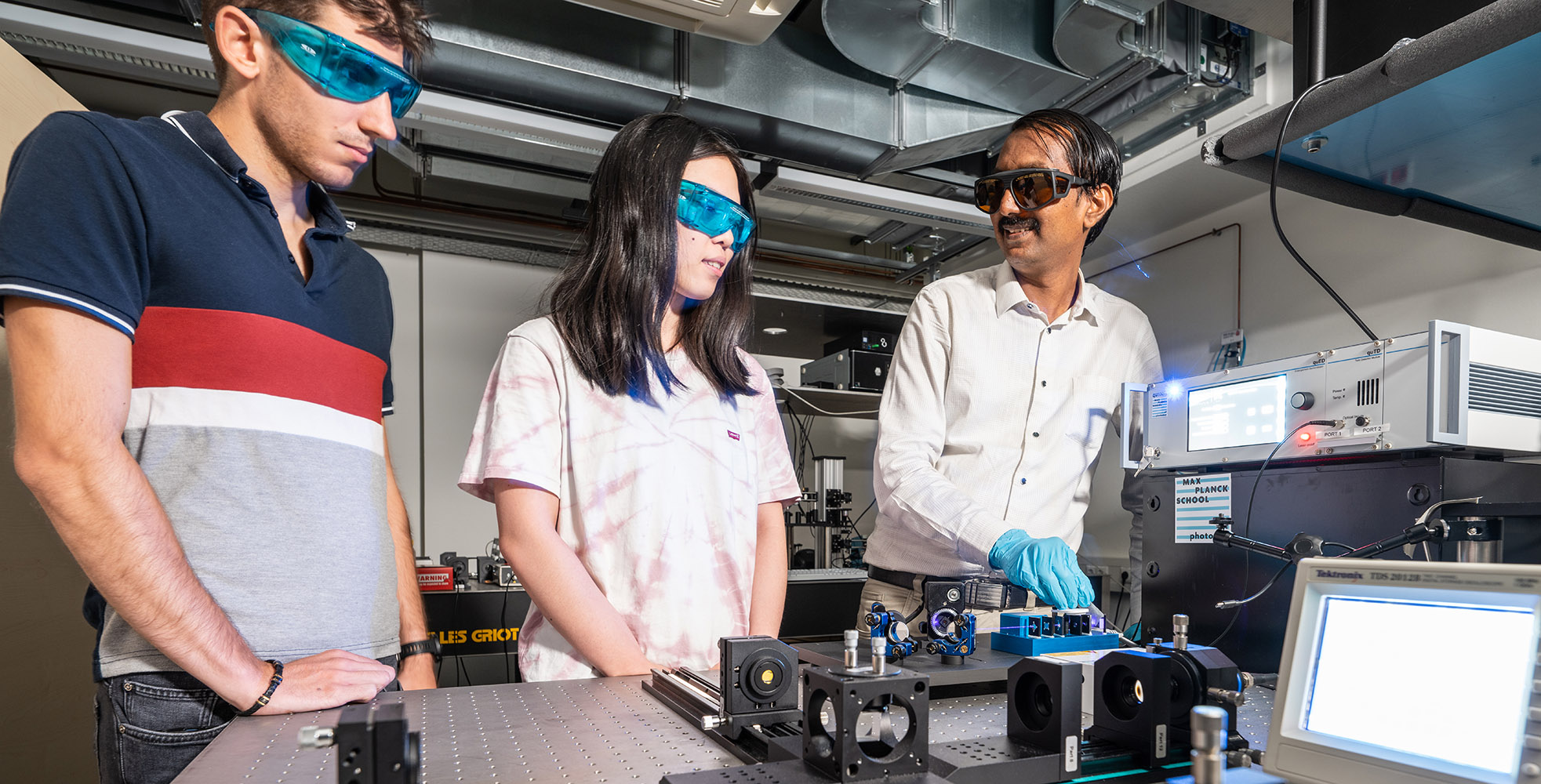The teaching format was complemented by the opportunity to jointly implement experiments on the Fraunhofer quantum computer. “We are thus fulfilling one of the promises of the Second Quantum Revolution in teaching: making quantum physics vividly comprehensible and making it accessible in concrete examples,” says Setzpfandt.
Experiments in quantum optics and quantum computing
A maximum of 18 students and doctoral candidates were able to take part in the practical course this semester – but demand was significantly higher. Together with the lecturers, they implemented three experiments in the field of quantum computing and six more on the topic of quantum optics on the Fraunhofer quantum computer.
But how do the operations on the first commercial quantum computer, which is run by IBM at the site in Ehningen, Baden-Württemberg (Germany), actually work? “The quantum computers are managed remotely via a cloud using the Python programming language,” Eilenberger explains. “For this purpose, we have provided the course participants with interactive lab books in which quantum physical and algorithmic aspects are presented. In addition, the books discuss the basics of programming the quantum computer.” Subsequently, participants were encouraged to program the quantum computers themselves within these interactive digital notebooks. Furthermore, they were to learn to read out and make sense of the results. “In the process, we solved problems in the area of simulating quantum optical systems as well as on what is known as Grover's algorithm,” Eilenberger further discusses.
Grover's algorithm, also known as “quantum search algorithm”, can find solutions to unstructured problems much faster than classical computers. The team of faculty, doctoral candidates and students first solved the following problem: a + b = 17. That is, the participants found numbers for a and b whose sum equals 17. “Of course, this is merely a toy problem,” clarifies Eilenberger. “We were able to show a real quantum advantage, by contrast, in the simulation problem. We could show that entangled qubits, i.e., photons, allow significantly more precise interferometric measurements than classical photons.” This method is not only suitable for improving optical metrology, but also for building more precise clocks, the quantum researcher explains. “Using the QSystemOne, we were able to demonstrate a real quantum advantage for up to eight entangled qubits!”
